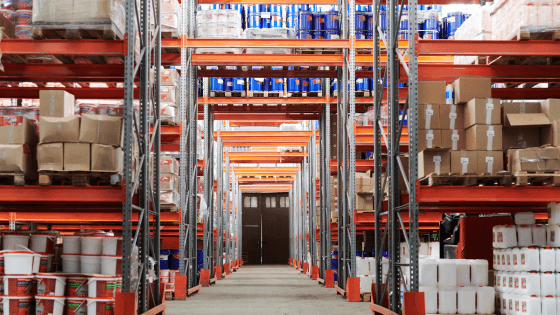10 Proven Principles for Best Warehouse Design and Operation
Warehouse design and operation is crucial for the success of a business that relies on efficient storage and distribution of goods. To maximize productivity, minimize costs, and ensure safety, warehouse managers must be diligent in creating and maintaining the best possible working environment. This article outlines ten proven principles that will help improve the design and operation of your warehouse, ultimately leading to a more successful business.
Plan with Scalability in Mind
When designing a warehouse, ensure that it can accommodate future growth. Plan for additional storage capacity, expansion of the warehouse, or the ability to reconfigure the layout to meet changing needs. Anticipating future requirements will save time and resources in the long run.
Optimize the Flow of Goods
Efficient movement of goods within the warehouse is crucial for smooth operations. Design the layout with clear, well-marked paths for workers, warehouse conveyor systems, and equipment, and strategically place high-traffic items near receiving and shipping areas to minimize travel time.
Incorporate Ergonomics
Consider the physical demands of warehouse tasks when designing the space. Prioritize ergonomics to reduce the risk of injury and improve worker productivity. Ensure adequate lighting, proper lifting equipment, and comfortable workstations to support employees’ health and safety.
Invest in Technology
Warehouse technology has come a long way in recent years. Automating processes with the help of warehouse management systems (WMS), radio-frequency identification (RFID), and robotic equipment can help streamline operations, increase accuracy, and reduce labor costs. Stay updated with the latest technological advancements and invest in the most appropriate tools for your warehouse.
Maximize Storage Density
Make the most of your available space by maximizing storage density. Use high-density storage systems such as pallet racking or drive-in racks, and consider using vertical space with mezzanines or multi-tier systems. The more efficiently you can store items, the more cost-effective your warehouse will be.
Implement an Effective Dust Collection System
In warehouses that handle materials prone to generating dust, such as woodworking facilities, an effective dust collection system is vital. Proper dust collection not only ensures a cleaner and safer environment for workers, but it also helps maintain the quality and integrity of stored goods. Invest in a high-quality woodworking dust collection system to minimize the hazards and disruptions caused by excessive dust accumulation.
Prioritize Safety
Safety should always be a top priority in warehouse design and operation. Implement safety measures such as guardrails, designated walkways, and proper signage to protect workers and equipment. Regularly inspect and maintain equipment, and provide ongoing safety training for employees.
Optimize Warehouse Layout
An optimized warehouse layout is essential for efficient operations. Balance the need for storage density with the need for accessibility and consider factors such as product velocity and seasonal fluctuations. Regularly evaluate and adjust the layout to ensure it continues to meet your business’s changing needs.
Continuously Improve Processes
The most successful warehouses are those that continuously seek to improve their processes. Regularly review your warehouse operations, identify areas for improvement, and implement changes as needed. Encourage employees to provide feedback and suggestions for improvement, as they often have valuable insights into day-to-day operations.
Engage in Proper Maintenance
Routine maintenance is critical for a well-functioning warehouse. Schedule regular inspections and maintenance for all equipment, including forklifts, conveyors, and racking systems, to prevent downtime and costly repairs. Develop a preventative maintenance program to keep your warehouse operating efficiently and safely.
Conclusion
By implementing these ten proven principles, you can create a warehouse that is efficient, safe, and adaptable to your business’s needs. With proper planning, technology investments, and a focus on continuous improvement, your warehouse will become a well-oiled machine that supports the success of your business.
Remember that incorporating an effective dust collection system, especially in woodworking environments, will not only contribute to a cleaner and safer workspace, but also preserve the quality of your products. Ultimately, these principles will help you create a warehouse environment that promotes productivity, cost savings, and the well-being of your employees.

